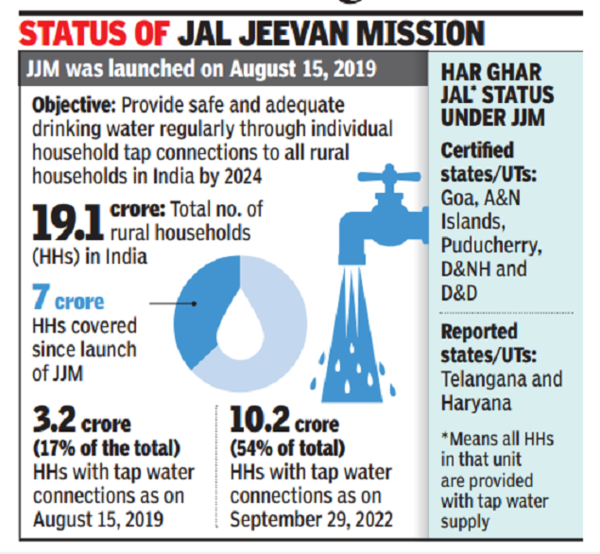The findings show Puducherry at the top with 88% functionality score followed by Tamil Nadu (86%), Himachal Pradesh (82%), Goa (81%) and Telangana (80%).
On the other hand, water-scarce Rajasthan is at the bottom with the lowest 38% of functionality score with Kerala, Manipur and Andaman & Nicobar Islands (40% each), Tripura (41%), Maharashtra (43%) and Madhya Pradesh (47%) appearing as second, third, fourth and fifth worst state, respectively.

The other states where functionality was less than the national average of 62% include Odisha (54%), Haryana and Jharkhand (55% each), Uttar Pradesh (57%) and Karnataka (58%).
Functionality has been computed as the intersection of adequate quantity (minimum 55 litres per capita per day), fully regular supply and potable (quality) for households wherein water supply was available at the time of survey in 2,59,151 households.
The assessment was done by a third party under the Jal Jeevan Mission (JJM) which aims to provide safe and adequate drinking water regularly through individual household tap connections to all rural households (HH) in India by 2024.
It was found that nationally, 86% of the HH tap connections were found to be working on the day of the sample survey for the assessment. Out of which more than four out of five HHs (85%) received adequate quantity, 80% got fully regular supply and 87% received potable water. The intersection of these parameters, however, turned out to be 62% of the HHs receiving fully functional tap water connections within the premises.
The survey found 14% of the HHs did not receive water through household taps on the date or for a week preceding the survey.






